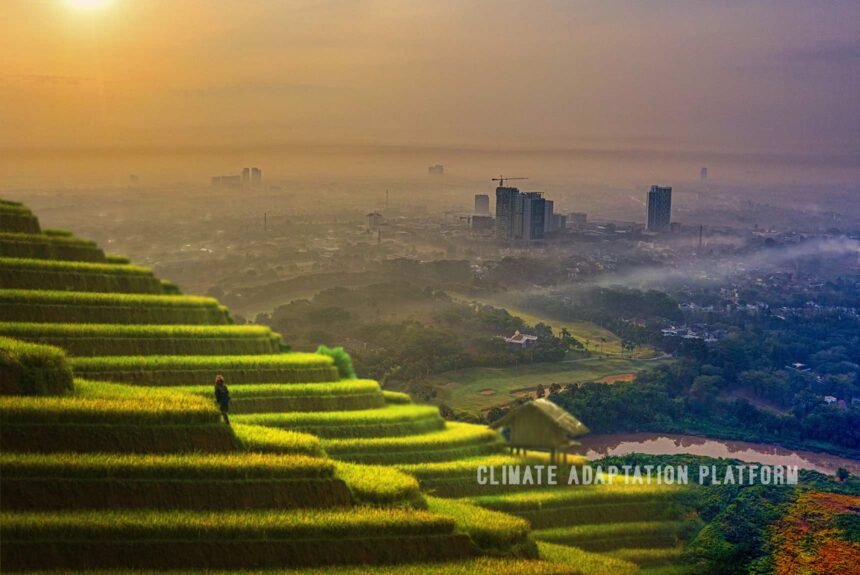An ADB report, Asia in the Global Transition to Net Zero, released on April 2023, explores what a global transition to net zero could mean for Asia and the Pacific under various climate policy scenarios and provides recommendations.
According to the report developing Asia faces a climate policy crossroads. The region is highly vulnerable to climate change threatening the livelihoods of its poorest. Additionally, climate change is also putting at risk both regional and global food security.
Asia’s share of global GHG emissions is also increasing – nearly doubling from 22% in 1990 to 44% in 2019 and is expected to remain at this share until mid-century under current policies. At this current emission trend, the region could use up the remaining global carbon budget that limits warming to 1.5°C by 2040.
The report points out that the crisis can only be addressed if Asia becomes an increasing contributor to climate change. The region’s GHG emissions have grown faster than the global average since the 1980s.
Investments needed to achieve accelerated net-zero
The report shows the investments needed in the region to transform developing Asia’s energy sector. Most clean energy investments come from advanced economies apart from the People’s Republic of China. In 2021, the world invested $926 billion in power supply, with $119 billion in fossil fuel generation and $764 billion in clean energy. Around 80% of clean energy investment is from advanced economies and the PRC, while investments from developing countries lag.
Data from the IEA shows that in 2021 developing Asia invested $468 billion in power supply, of which $397 billion was in clean energy – of which 63% is from the PRC.
Asia needs to boost investment to $707 billion under the accelerated global net zero scenario and to $529 billion under the current policies scenario.
Of this investment under the accelerated global net zero scenario, the region needs to invest $345 billion in renewables, $282 billion in transmission and distribution network and storage to facilitate the increase in power from renewable energy and $74 billion in fossil fuel with CCS.
Overall, Asia needs an annual investment of 2.2% of its GDP, with a slightly higher GDP share of 2.6%–2.7% in India, the Caucasus, and Central Asia. Indonesia and the rest of Southeast Asia will require an annual investment of 1.5%–1.6% of GDP.
Modelled carbon prices to achieve an accelerated global net-zero scenario
The report notes that carbon prices trigger decarbonisation in the modelled scenarios. Carbon prices must be at $70 tons of carbon dioxide equivalent (tCO2 e) in 2030 and $153 tCO2 e in 2050 to achieve the accelerated global net zero scenarios.
These prices are attainable, the report says, as Sweden was already imposing a carbon tax of $137/tCO2 e in 2022, and the EU’s Emissions trading system (ETS) price exceeded $100/tCO2 e in 2023. These prices are also generally well-aligned with the broader literature, citing a 2017 study recommending carbon prices should be in the $50–$100 range by 2030 to keep warming well below 2°C.
Economic costs of the climate change mitigation scenarios
Without counting any climate benefits or co-benefits, pursuing global net zero is 0.8% of GDP for developing Asia in 2030 and 1.4% in 2070 if the world acts quickly and in coordination with all countries. Put another way, GPD growth will decline by 0.035 percentage points from 2020 to 2100.
Economic costs will vary across Asia. Fossil importers like the Caucasus and Central Asia will have more significant reductions in economic activity than other regions like India and South Asia, which tend to have a much lower level of economic development.
The modelling also finds that delaying action until current NDCs expire will be more costly than the more ambitious mitigation under the accelerated global net zero scenario.
If countries act quickly in a coordinated way, nearly everyone will benefit from decarbonisation as it lowers overall costs.
However, rapid decarbonisation in some countries but none in others will result in uncoordinated net-zero emissions. It will incur high economic costs due to stranded assets and conversion of energy capacity before its end of service life.



Leave a Reply